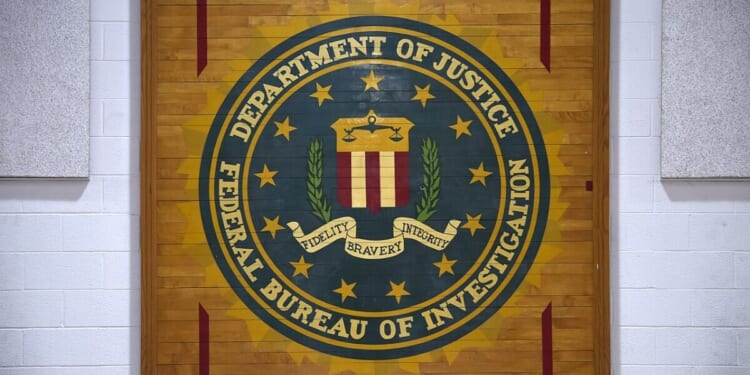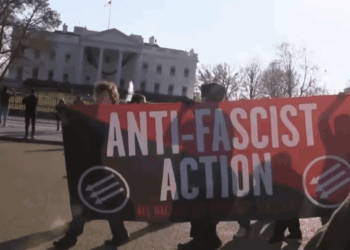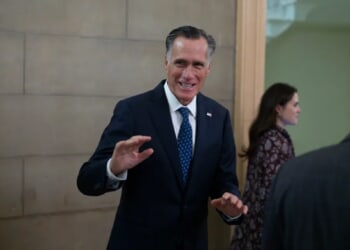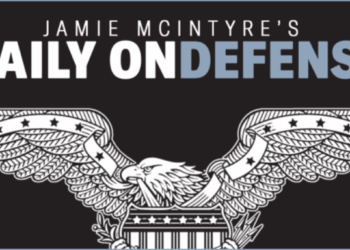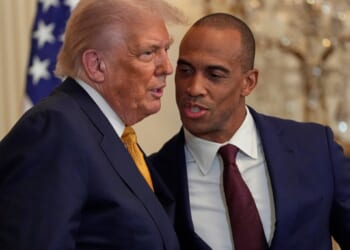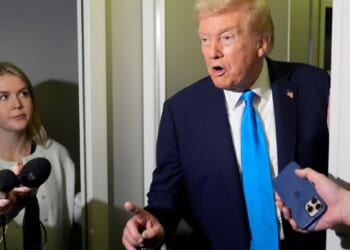On Monday, U.S. Attorney for the Eastern District of Virginia Lindsey Halligan filed an extraordinary batch of documents in the public docket of her case against former FBI Director James Comey. The exhibits range from Comey’s communications with his handpicked FBI leaker, Daniel Richman, a Columbia law professor the bureau employed specifically to funnel Comey’s preferred narratives to the press, to text messages between Richman and New York Times reporter Michael Schmidt. But the most significant document by far is Comey’s own handwritten notes proving, beyond any doubt, that he knew early on the entire Russia collusion story was a Clinton campaign fabrication.
In other words, Comey knew he should have been investigating Hillary Clinton for orchestrating the most dangerous political hoax in American history, falsely accusing the Republican nominee of colluding with Russia. Instead, he chose to weaponize that lie, using the full force of the FBI to try to destroy Donald Trump. While the majority of the 14 new exhibits reveal how Comey lied and manipulated media narratives through his anonymous conduit — for example, to polish his own image or to make Trump look bad — the most striking takeaway is that we now have proof Comey knew the Russia collusion story was orchestrated by the Clinton campaign.
It is remarkable that these documents survived at all. They were found in an FBI “burn bag,” a method for destroying sensitive materials. For reasons still unknown, several of these bags, reportedly five in total, were never incinerated. Instead, they were placed inside an unused, locked Sensitive Compartmented Information Facility (SCIF) at FBI headquarters. Why they ended up there remains a mystery. Perhaps a silent whistleblower or conscientious staffer intervened.
According to a July 2025 internal FBI document opening an investigation into potential crimes surrounding the burn bags, it appears they were placed in the unused SCIF in the days leading up to Trump’s second inauguration in January 2025. This suggests that the documents — which also included materials related to the FBI’s Mar-a-Lago raid, the Jan. 6 Capitol breach, and the highly classified annex to Special Counsel John Durham’s report detailing how U.S. intelligence uncovered in the summer of 2016 that the Russia collusion plot was a Clinton fabrication — were either being collected for destruction and then forgotten, or time ran out or some other factor derailed that plan, or they were stored secretly to be discovered by the incoming Trump team.
Be that as it may, whether through luck, providence, or a quiet act of integrity, the burn bags remained in the SCIF, where they were discovered earlier this year by FBI director Kash Patel and his team. Their contents now form the backbone of the case against Comey.
Overwhelming Evidence to Indict
The string of good fortune did not end there. After reviewing the evidence, Halligan’s predecessor, Trump’s original appointee as U.S. attorney for the Eastern District of Virginia, Erik Siebert, reportedly concluded there was insufficient evidence to indict Comey for lying about leaking to the media. As the new documents show, overwhelming evidence existed that he had done exactly that. Siebert, who was endorsed by Virginia’s Democratic senators, Tim Kaine and Mark Warner, did not make a public announcement, but word of his intention not to prosecute Comey — or New York Attorney General Letitia James, for that matter — appears to have reached President Trump, who promptly fired Seibert just before the statute of limitations was set to expire.
Federal law requires most cases to be brought within five years of the alleged crime. In Comey’s case, his lies to Congress, specifically his denials under oath of leaking to the media through intermediaries, dated to Sept. 30, 2020. That meant Halligan, who was appointed on Sept. 22, had only days to absorb years’ worth of material, including the rediscovered burn bag evidence, and persuade a grand jury in the heavily Democratic D.C. suburbs of Northern Virginia to indict the former FBI director. Against enormous odds, and despite resistance from within her own office, she succeeded.
Then, in yet another twist, Comey himself gave Halligan the opportunity to make the burn bag materials public. By filing a motion to dismiss the case on grounds of “vindictive and selective prosecution,” Comey opened the door for Halligan to reveal the evidence showing his extensive and deliberate leaks to shape media narratives, precisely the misconduct he denied under oath.
There was one disappointment, however. The grand jury declined to indict Comey on what would have been the most consequential charge, lying about his knowledge of the Clinton campaign’s plan to frame Trump as a Russian asset. Halligan charged him with this count, but the jury, likely influenced by partisan loyalties, refused to move forward.
New Evidence Fills the Gaps
Even so, the newly filed evidence fills in the final gaps. Comey’s handwritten notes, dated Sept. 26, 2016, explicitly record that he was aware of the Clinton plan to tie Trump to Russia, stating: “Clinton plan to tie Trump.” This came just weeks after the CIA had formally referred the intelligence about the Clinton plan to him. Until now, that referral was the only known proof that Comey had been informed. However, a skilled dissembler like Comey could have easily claimed he had not seen or read it, which is exactly what he did, asserting he had no recollection of the Clinton plan. While it was always implausible that he was unaware of or could have forgotten the central element of Russiagate — that it was nothing more than a Clinton smear — his own notes now prove that his denials were false.
What makes this even more damning is that just one week before Comey wrote those notes, Clinton campaign lawyer Michael Sussmann arrived at FBI headquarters with a USB drive containing phony evidence supposedly showing Trump-Russia communications, handing it directly to FBI General Counsel James Baker. Analysts quickly determined it was nonsense. Comey therefore had both the CIA referral and direct proof that the hoax was underway, yet he continued to pursue the Trump investigation.
With the revelation of his own notes, which Halligan says “were not known to any prior investigative teams,” we can now say with certainty that Comey knew the Russia collusion narrative was a political operation, not an intelligence matter. By allowing it to proceed regardless, he enabled one of the most destructive abuses of power in American history.
Comey’s decision not to shut down his phony Russia collusion investigation poisoned the early years of the Trump presidency, ruined the lives of countless innocent people, criminalized diplomacy with Russia, reshaped the geopolitical order by pushing Russia closer to China, and deepened the public’s mistrust of every major government and media institution. For that alone, he deserves a sentence reflecting the enormity of his betrayal, though he almost certainly will not face one, in part because the grand jury did not indict on this count. Yet thanks to the persistence of a few determined individuals, including Kash Patel and Lindsey Halligan, and perhaps a touch of providence, the truth is finally coming to light.

